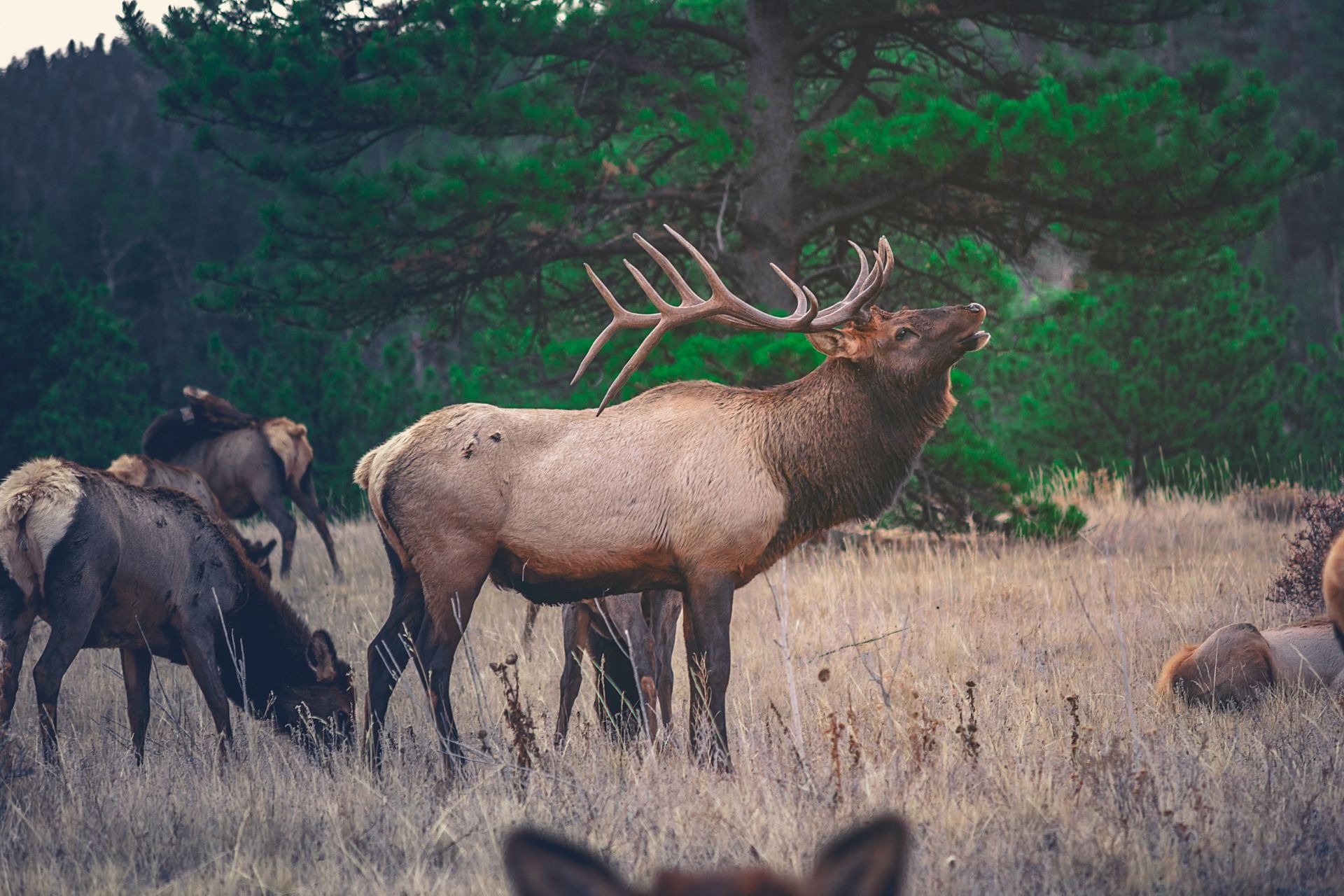For us, there’s almost nothing better in this world than hearing elk sounds echo throughout the mountains. No other animal in North America sounds quite like it. And the different cadences are extraordinary. For the elk hunter, it’s important to understand exactly what these vocalizations mean. For instance, you want to know if the sounds you’re hearing are from a bull or cow, if they’re alert or calm. This will also help you become a better caller, allowing you to draw the animals in close enough for a shot.
Bugle
Even non-hunters can recognize a bugle from a bull elk. It’s a multi-tone sound that begins low and transitions into what can only be described as a loud scream. Bulls bugle during the rut when they’re seeking a mate. The vocalization also serves as a warning to other bulls in the area as a sign of dominance. While you can’t judge the size of a bull based on his bugle, it can be used as a beacon to pinpoint his location. Use the Back Country Elk Decoy and a bugle call to draw him into range. When the rut is in full swing, he won’t be able to resist the prospect of fighting off another male to protect his harem.
Glunking
This is a sound made by a bull that you may also hear during the rut. A glunk is a muffled bass sound, in single tones, one after the other in quick succession. The bull uses this vocalization to communicate with groups of cows. So if you hear this, there’s a good chance there are cows nearby as well.
Chuckle
Bulls will produce a chuckle at the end of a bugle. It sounds like a series of short, loud grunts. However, he may chuckle without bugling. This is another vocalization that is meant to express dominance to males and attract females. Many bugle calls can produce a chuckle, and it’s a great way to add variation to your call sequences.
Bark
This call is used by elk to alert the herd of danger. The vocalization is a single, sharp sound.
Typically, if you hear a bark, the whole herd will quickly disappear because they’ve spotted or winded you. Barks are bad and a sound you want to avoid hearing.
Cow in Estrus
Cows will use this vocalization during the rut to signify she is ready to breed. It sounds like a whine, similar to a bugle but not as high-pitched or as long. This is a handy call to keep in your bag, as this can be used to locate a herd or stop a bull when you’re ready to shoot.
Calf
A calf will sound similar to a cow, although the tone will be much lower. Typically, their calls will be single sounds, similar to a squeak. Much like whitetail does, cow elk will respond to the bleating of a lost calf. If you can pique the curiosity of a few cows with a calf call, they’ll come into bow range. If you’re hunting bulls this can also be advantageous as he’ll often follow cows to ensure his harem doesn’t get separated.
Chirp
This call is made by cows and bulls, often when a large herd is together. They’re general noises elk make when near each other, feeding contently. If you hear these sounds, you can expect a herd close by.
